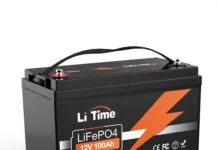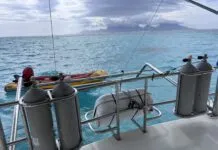
There are plenty of exciting things to buy in the world of sailing. Nabbing all the gear, gadgets, upgrades and essential marine accoutrement is fun and can make the sailing experience safer and more enjoyable.
Although one of the less exciting tasks on your list of to-dos, an insurance policy can provide safety on your outings and also peace of mind as an owner. Plus, it’s one of the best ways to protect your prized possession and, in some cases, your financial legacy.
There are so many factors that go into insuring your vessel, so it’s important to understand how to shop for and update your coverages as your ownership circumstances change. This guide will help you ask the right questions and note the important details that will help you choose the proper insurance for your boat.
THE PURPOSE OF SAILBOAT INSURANCE
Without restating the obvious, we’d like to point out that sailboat insurance is designed to protect you, as a boat owner, from financial losses associated with unexpected events or accidents on the water. This specialized policy typically covers damages to the sailboat, personal liability and sometimes even emergency towing or assistance services. Ideally, you’ll get a policy that doesn’t break the bank yet offers the appropriate coverage in the event of a covered peril.
WHAT FACTORS DETERMINE THE COST OF SAILBOAT INSURANCE?

In general, you can expect to pay between 1 percent and 5 percent of the value of your boat for insurance coverage each year. This is a high-level rule of thumb, so this number can go up or down based on the coverages you choose and the factors we’ll explain below.
Todd Shasha of Travelers Insurance leads initiatives on risk assessment and coverage solutions tailored for the marine industry. He explains, “The type of coverage you need will depend on how and where you use your boat. A sailboat used for casual weekend sailing might require different coverage than one used for more frequent or extended trips.”
He also explains how other location variables can affect your insurance coverage, “Ensure you have the appropriate navigational limits on your policy for where you are using it. Also, consider where you moor and store your boat. Boats stored in extreme weather-prone areas might require additional protection, such as enhanced on-water towing coverage and hurricane haul-out coverage.”
Here’s a list of some factors that can affect the price of your sailboat insurance:
- The value of your boat
- The specifications of your vessel (year, size, engine, max speed, horsepower, etc.)
- The state where it’s registered
- Use (recreational, commercial, etc.)
- Location of use and storage
- The age and condition of your boat
- Your personal boating experience and claims history
- The coverage limits and deductibles you choose
- Safety features on board, like fire extinguishers and GPS
- Whether or not you will be paying the premiums annually or in installments
Each of these factors affects the cost of your coverage. For example, newer boats or vessels with advanced safety features might qualify for discounted rates. Similarly, if you have an extensive and positive boating history with few claims, insurers may view you as a lower risk, which could lead to a lower premium.
It’s important to discuss as many aspects of your vessel as possible with your insurance provider to get the best coverage for your circumstances. The goal is to get the most comprehensive protection possible at a reasonable cost.
TYPES OF INSURANCE COVERAGE AVAILABLE FOR SAILBOATS
There are plenty of options, upgrades, endorsements and expanded limits available for almost any policy, but here are some basic coverages you should know about:
- Hull insurance: Covers repairs or replacement costs for physical damage to the sailboat’s hull and onboard equipment resulting from accidents, theft or weather events.
- Liability insurance: Provides coverage for legal obligations or damages you may be required to pay if your sailboat causes injury or damage to another person or property.
- Personal property coverage: Protects personal belongings on the sailboat, such as electronics, clothing and gear, which may be damaged or lost due to an insured event.
- Medical payments coverage: Offers financial assistance for medical expenses of the boat owner and passengers in the event of an accident on the vessel.
- Uninsured boater coverage: Covers damages to your sailboat and injuries to occupants caused by an uninsured or underinsured boater.
- Towing and assistance coverage: Reimburses costs for towing services and other emergency assistance if your sailboat becomes stranded on the water.
Mr. Shasha adds, “Additionally, be cautious of underinsurance. Ensure your coverage is sufficient for the total value of your boat, including accessories like trailers or other auxiliary equipment, as underinsuring can leave you financially vulnerable in an emergency.”
WHAT’S NEEDED TO INSURE MY SAILBOAT

Ideally, you’ll go through an application process that will require specific information about all owners on the vessel’s title and other key details about your boat.
It’s a good idea to compare prices with a few insurers, so be prepared to furnish this information a few times as you shop around for the best rates.
Ask for similar coverages and limits so you can compare apples to apples. A really important part of this process is the inspection and survey.
Dr. Sergio Vitomir is a chemical engineer and founder of Boatsmartz Gelcoat Repair Kits. He’s also the proud owner of a Jeanneau Sun Odyssey 35. He explains how to make this process go smoother, “When buying insurance, it’ll be mandatory to have an out of water survey done on your boat. Before the survey is done, it’s important that you clean and lubricate the seacocks, address any osmosis blisters on your hull, and ensure that your electrical and electronics wiring is in working order. I also recommend you check your navigation lights to ensure they’re working and your bilge pump is tested and fully functional.” It is also prudent to check any Coast Guard required equipment as well.
Finally, you should know that all the information to provide to the insurance company should be true and accurate. You could be on the hook for major damages for making fraudulent statements and warranties on your application. In other words, be truthful and divulge as many details as you can, otherwise your claims may not be covered or, even worse, you could be held liable if false statements lead to damaged property or loss of life.
EXAMPLE PREMIUMS FOR THE BENETEAU OCEANIS 37.1
The Beneteau Oceanis 37.1 is a great example of a mass-produced sailboat that appeals to a broad spectrum due to its balance of comfort, performance, and price.
The vessel’s widespread popularity means that most insurers are familiar with its value and typical usage scenarios. Plus, its standard specs and widespread availability make it easier to determine replacement costs and repair estimates, ensuring that underwriting is fair and accurate.
Here’s an example of what you might pay to insure a basic model of the 2024 version of this sailboat, valued at around $325,000 with the following limits:
- Personal Effects: up to $2,500
- Liability coverage: up to $300,000
- Medical payments: up to $10,000
- Uninsured boaters: up to $328,500
Note, the quotes from State Farm and Edward William are for the boat docked in Florida and includes navigating the Caribbean. The quote from Geico is for the boat docked in Puerto Rico and includes navigating the Caribbean.
| State Farm | Edward William | Geico | |
| Annual premium | $7,445 | $3,780 | $2,053 |
UPDATING YOUR INSURANCE COVERAGE
Even if you’ve chosen the perfect coverage, making frequent updates should be part of your plan. Todd Shasha explains, “It’s crucial to review your coverage needs with your insurance representative on an annual basis or whenever there are major changes to your boat’s status or use, such as renovations (including capital improvements), mooring location, or where you navigate.”
Also, reviewing your coverage helps you stay informed about any new offerings or endorsements that could provide additional protection. Insurance providers frequently update their product offerings, and new policies could offer better terms or additional benefits at competitive rates.
Finally, you should know that some providers may require additional inspections and reports periodically. For example, you may be required to provide a new survey or mast/rigging report every five years to renew your policy.
The key here is to be proactive and ensure your policy meets all of your needs in all of your sailing circumstances—no matter how much they may change.
CONCLUSION
In conclusion, securing the right insurance coverage for your sailboat involves understanding the factors that affect your premiums and the coverages you’ll need based on your boating activities.
Regularly reviewing and adjusting your insurance policy will keep you informed of new offerings and, hopefully, get the best terms, coverages and pricing. Ultimately, the aim is to enjoy peace of mind while navigating the waters, knowing that both you and your boat are well-protected.



































What proportion of that nonsense was generated by AI? Seriously. I’m not a troll. You can see my name. I looked up the author. Source bias, perhaps. But the author has little to no knowledge of the ins and outs of insurance – especially when it comes to boats. The numbers cited in the article mean nothing. Reading the fine print of each insurance policy would really tell you something. Also, what is the salvage probability for each company?
Again, that is the stuff that Practical Sailor digs into. Why not take a crack at that?
Consider your example: The $2K insurance policy from one group probably is worth that if the company just moves to salvage rather than repair any damage. If you pay upwards of $7K, I suspect the burden to cover the costs – regardless of claim % of value – would be much higher than said low cost policy. Yeah, go with el cheapo (ahem…GEICO, you listening?) and you might be left without a boat for even minor repairs. They are quick to salvage. Then again, I saved me $5K/year. Go me!
So, not to attack the author; I’m sure she means well. Why not a real investigation into those costs? You guys rock at PS and I am sure you could dig deep and find rats everywhere. PS was and is always the source without commercial bias. Thank you for still fighting the good fight.
Yeah, I second Patrick’s sentiments.
There have been better articles on insurance from PS in the past, one of which I participated in via a comment exchange that caused a bit of a kerfuffle with Boat US. I can say that my experience with quoting from the listed vendors is wildly at variance with this article. I received better pricing and far more comprehensive coverage from State Farm, for instance. And significant policy detail variance between insurers means that comparisons just based on price are meaningless. Yet nary a word about this in the article.
Most PS readers are not concerned about factory new boats. A HUGE factor is the insurer’s policy regarding older boats- particularly with GEICO, at least in my experience. A rundown on those and other policies would have actually been helpful.
In my case a number of years back, I discovered when reading my policy that due to age of hull based deduction changes made when GEICO took over underwriting, my Boat US policy provided effectively no coverage for damage to my older sailboat- unless it was a total loss. I’d be interested in knowing if this is still the case, as I’m now looking at another older sailboat.
You are right- insurance is something nearly every sailboat owner needs to deal with. My marina requires a minimum standard. And it can be confusing to figure out, even what questions to ask. But this was…. not helpful.